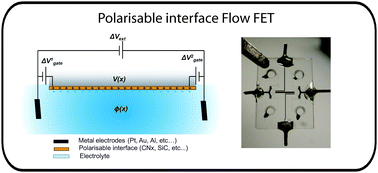Flow field effect transistors with polarisable interface for EOF tunable microfluidic separation devices
Abstract
A method is proposed to control the zeta potential in microchannels using electrically polarisable interfaces in direct contact with the electrolyte. The approach is based on the use of conducting layers exhibiting minimal electrochemical reactions with aqueous electrolytes but a large potential window (typically from −2 V to +2 V) enabling tuning their zeta potential without detrimental faradic reactions.


 Please wait while we load your content...
Please wait while we load your content...